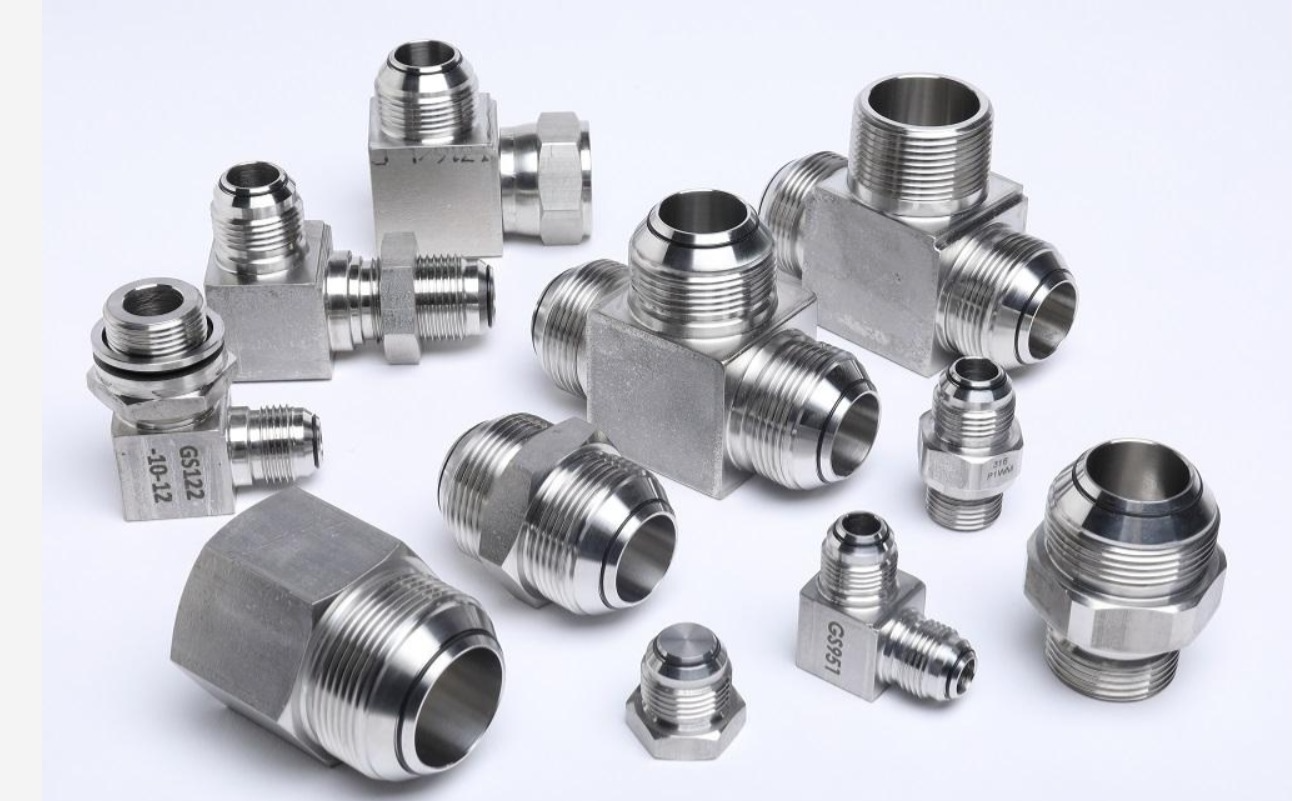BSPP hydraulic fittings are vital components in hydraulic systems, ensuring secure and efficient fluid transmission in a wide range of applications. This comprehensive guide explores the features, advantages, applications, installation techniques, and maintenance considerations associated with BSPP fittings, providing readers with valuable insights into this essential hydraulic component.
Understanding BSPP Fittings
BSPP, which stands for British Standard Pipe Parallel, is a widely used thread standard for hydraulic fittings. It features a parallel thread design that allows for easy assembly and secure connections. BSPP fittings employ a sealing mechanism, often utilizing O-rings, to prevent leaks and ensure fluid containment. These fittings are available in various materials and finishes to accommodate diverse operational requirements.
Here, we have listed down the several examples of fittings manufactured in compliance to BSPP standards:
➢ Male JIC / Male BSPP Straight Fitting
➢ Male JIC / Female BSPP Straight Adapter
➢ Long JIC Male 74° Cone / BSPP O-Ring Boss
➢ Reliable Metric Male 24° L.T. / BSPP Female
➢ Convert G Thread / NPT With Metric Male 24° H.T. / BSPP Female Adapter
Advantages of BSPP Fittings
BSPP hydraulic fittings offer several key advantages that make them a preferred choice in hydraulic systems. With their high-pressure capability, these fittings can withstand demanding applications, providing reliable performance even under extreme conditions. The precise thread design and sealing mechanism contribute to leak-free connections, preventing fluid loss and system inefficiencies. BSPP fittings also exhibit compatibility with a wide range of hydraulic systems and components, enhancing versatility. Furthermore, their straightforward installation process and ease of maintenance make them user-friendly solutions.
Common Applications of BSPP Fittings
BSPP fittings find extensive use in numerous industries and applications. They are commonly employed in industrial machinery and equipment, facilitating efficient fluid transfer and control. In construction applications, BSPP fittings are integral to hydraulic systems in excavators, loaders, and cranes, ensuring reliable operation and safety. Automotive applications benefit from BSPP fittings in braking systems, power steering, and suspension components, contributing to optimal performance and reliability. Marine and offshore installations rely on the corrosion-resistant properties of BSPP fittings to maintain secure connections in challenging environments.
Selecting the Right BSPP Fittings
Choosing the appropriate BSPP fittings is crucial for optimal performance and compatibility. It involves considerations such as thread sizes, types, and materials. Determining the specific operational requirements, environmental factors, and system specifications are essential for making informed decisions. Seeking expert advice and consulting reliable suppliers can assist in selecting the right BSPP fittings for individual applications.
Installation and Assembly of BSPP Fittings
Proper installation techniques are paramount to ensure the effectiveness and longevity of BSPP fittings. The process involves preparing the fitting and equipment, applying the correct thread sealant, and utilizing appropriate torque and tightening techniques. Regular checks for leakage and alignment verification should be performed to maintain reliable connections.
Maintenance and Troubleshooting of BSPP Fittings
Regular maintenance is necessary to keep BSPP fittings in optimal condition. Routine inspections help identify potential issues such as leaks, damaged O-rings, or worn-out fittings. Promptly addressing these issues by tightening loose connections or replacing damaged components is crucial for preventing further complications. Referring to manufacturer guidelines and resources can provide valuable insights into troubleshooting and maintenance practices specific to BSPP fittings.
Comparing BSPP with Other Hydraulic Fitting Standards
BSPP fittings are often compared to other hydraulic fitting standards, such as BSPT (British Standard Pipe Tapered) and NPT (National Pipe Thread). Understanding the differences between these standards is important for selecting the appropriate fittings for specific applications. While BSPT fittings have a tapered thread design, BSPP fittings utilize a parallel thread design. Comparisons with NPT fittings, a common standard in the United States, also help users navigate compatibility challenges when working with different thread types.
Common Challenges and Solutions with BSPP Fittings
Despite their advantages, BSPP fittings may encounter challenges during their lifespan. These challenges can include thread damage, contamination, temperature and pressure limitations, and installation difficulties. Identifying and addressing these challenges promptly through proper maintenance, repair techniques, and adhering to operational limits ensures the long-term reliability of BSPP fittings.
Industry Standards and Certifications for BSPP Fittings
BSPP fittings adhere to international standards set by organizations such as the International Organization for Standardization (ISO). Compliance with these standards ensures the quality, reliability, and safety of the fittings. Additionally, third-party certifications and quality assurance processes provide further validation of the manufacturing processes and performance of BSPP fittings.
Conclusion
BSPP hydraulic fittings play a vital role in maintaining reliable connections within hydraulic systems across various industries. By understanding the features, advantages, applications, installation techniques, and maintenance considerations associated with BSPP fittings, users can make informed decisions to ensure optimal performance and safety. Consulting experts and trusted suppliers for fitting solutions is highly recommended to ensure the selection of high-quality BSPP fittings that meet specific operational requirements.
Post time: Jun-23-2023


